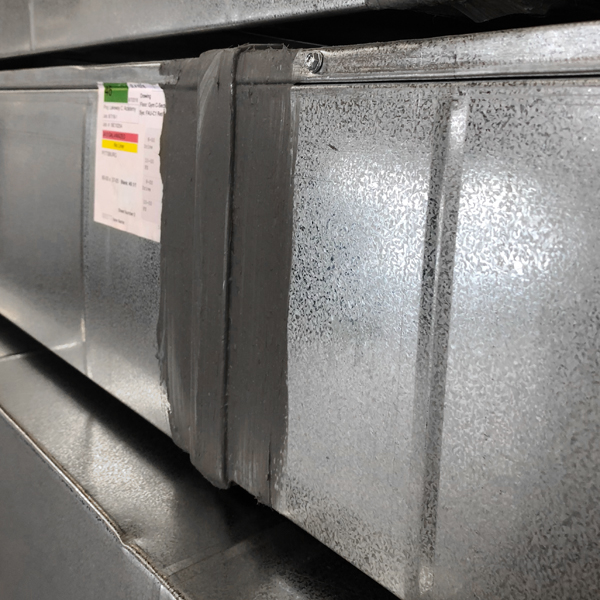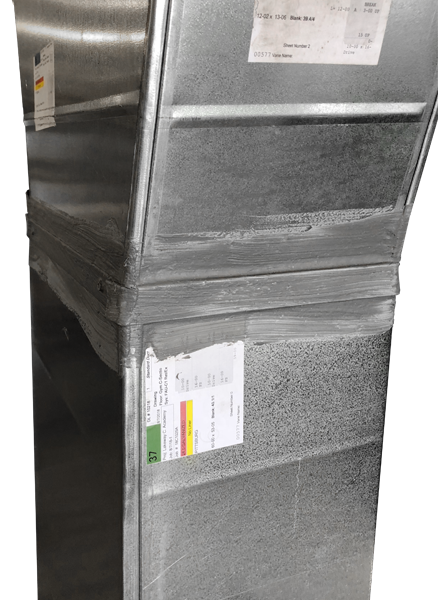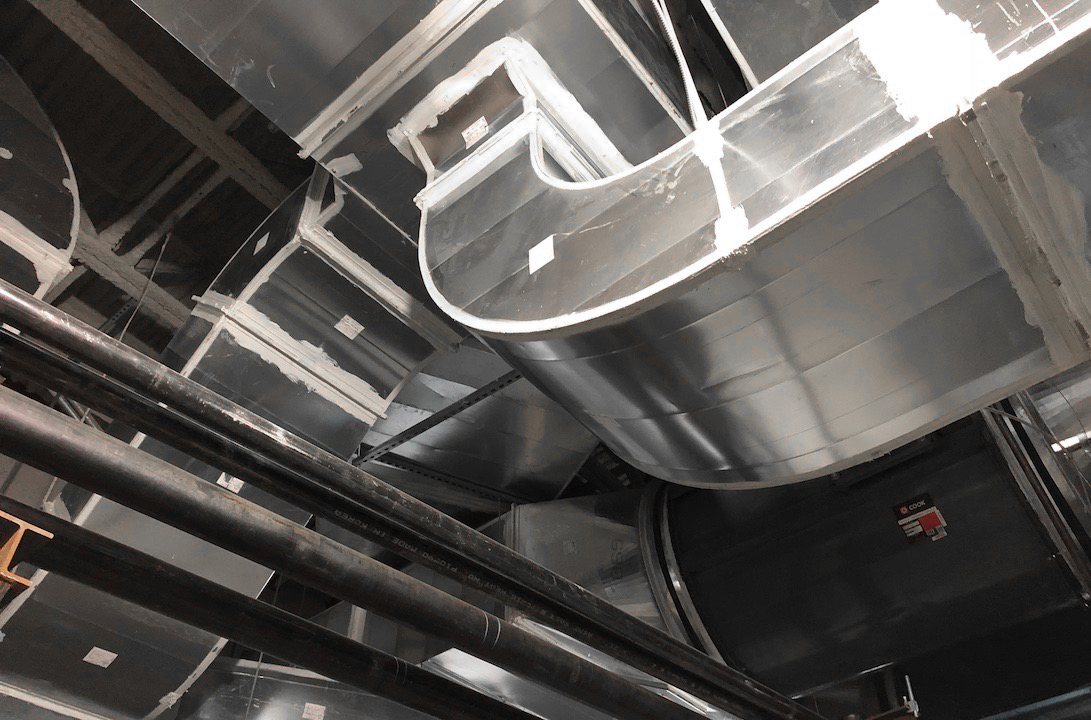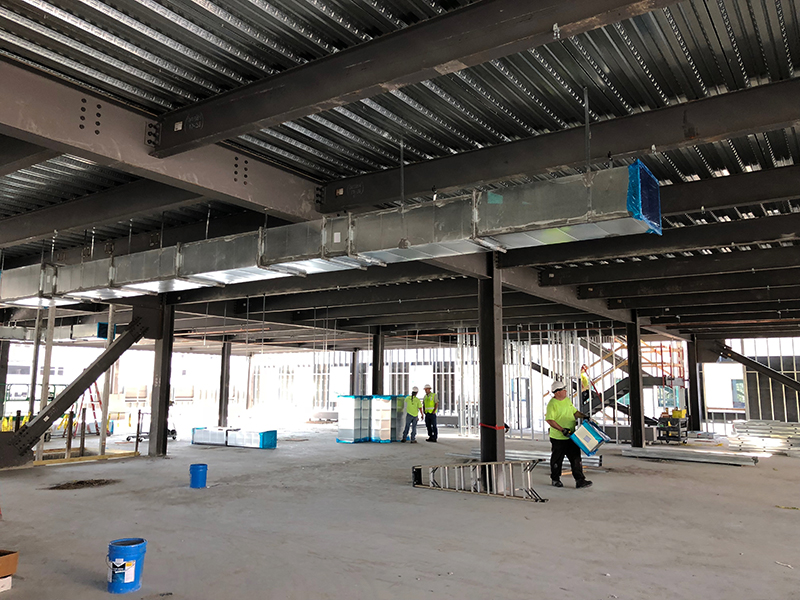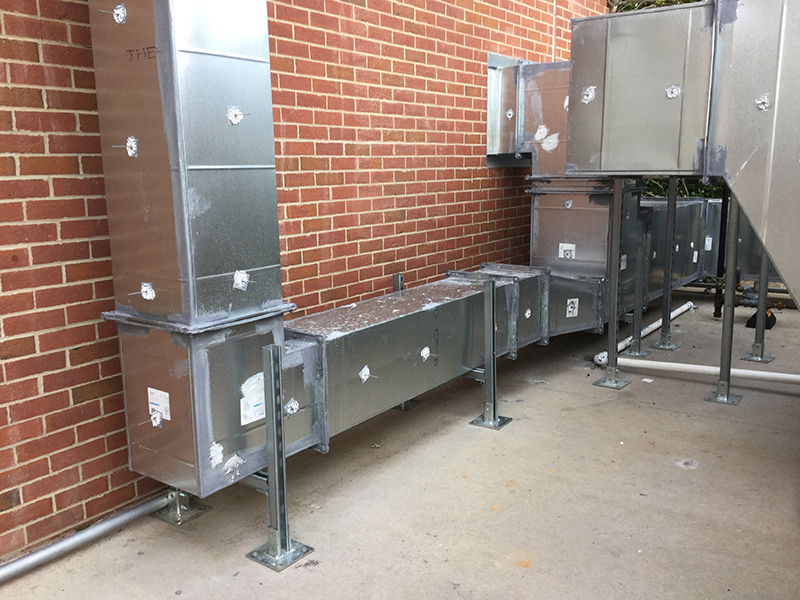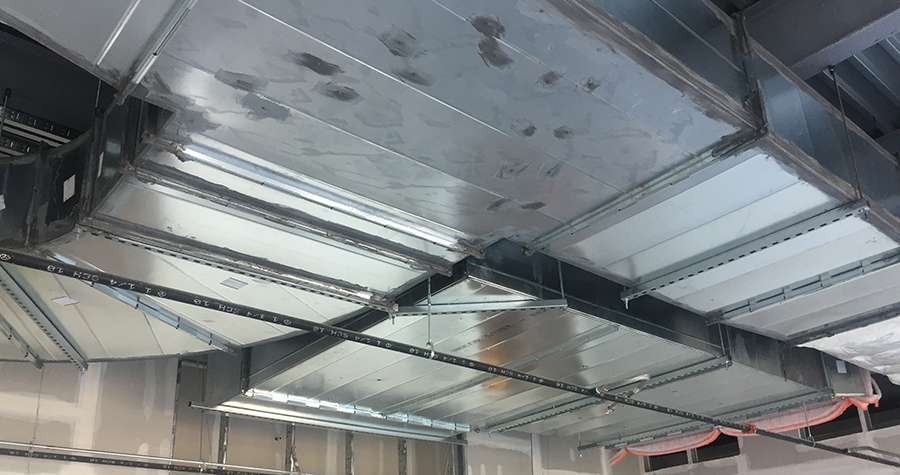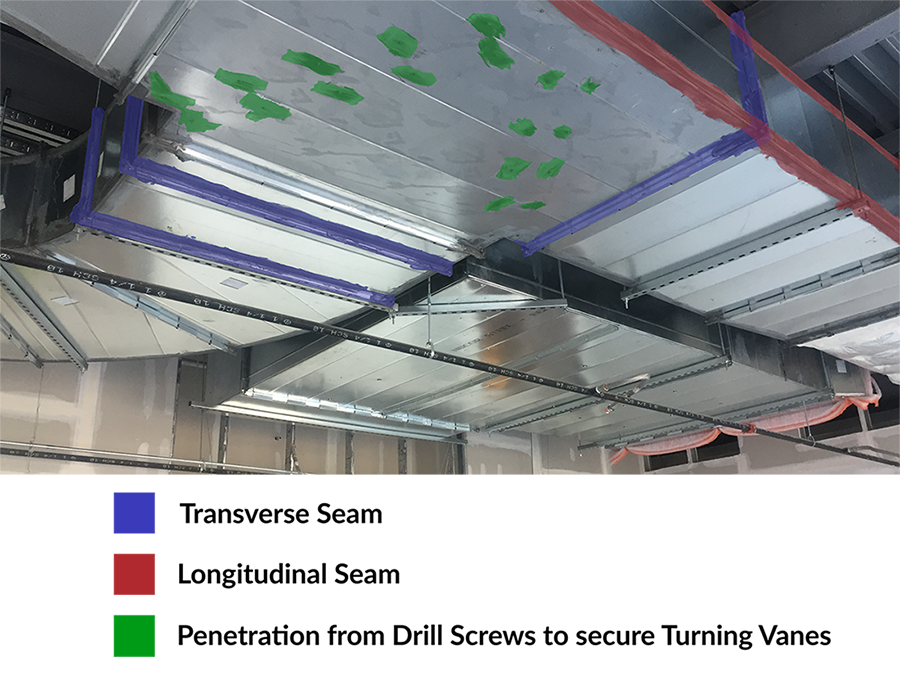SMACNA and Mastic on Rectangular Duct
“Rectangular Longitudinal Seam leakage for Pittsburgh and Buttonlock seams is low compared to that in Transverse Joints” SMACNA Duct Construction Standards 2005
But SMACNA also states that “the designer is responsible for determining the pressure class or classes required for duct construction and for evaluating the amount of sealing necessary”.
SMACNA breaks down the sealing of commercial ductwork into three classes: A, B, and C.
- Class A applies to static pressure of 4″ wg or more and requires all transverse joints, longitudinal seams and duct wall penetrations to be sealed.
- Class B applies to static pressure of 3″ wg and requires all transverse joints and longitudinal seams be sealed.
- Class C applies to static pressure of 2″ wg and requires only the transverse joint be sealed.
Low Pressure Duct with Slip and Drive connected, Duct Sealant Applied. Mastic is always required on Transverse Connection…
…but not on Longitudinal seam.
High Pressure Duct with Hardcast CCW181 White, heavily fibrous mastic applied at every seam, joint and penetration. Some Engineers like to see the White Mastic as it makes it more visible, especially if Duct is high in air and the gray might be a challenge to see.
All penetrations into the duct includes Taps for takeoffs, transitions and screw holes onto which hanging methods are connected to the Duct like this large job in New Orleans.
Applying the duct sealant to Longitudinal seam is easily visible when done on Exterior of Ductwork.
Are these handprints or…?
On this Jacksonville Florida job , the mastic applied to every penetration; those are not hand prints, it’s the mastic applied to the points in the Elbow that has Turning Vanes secured by Drill Screws.
Of course some shops seal the Longitudinal seam on the Duct Interior if the Engineer prefers a cleaner look to the exterior.

